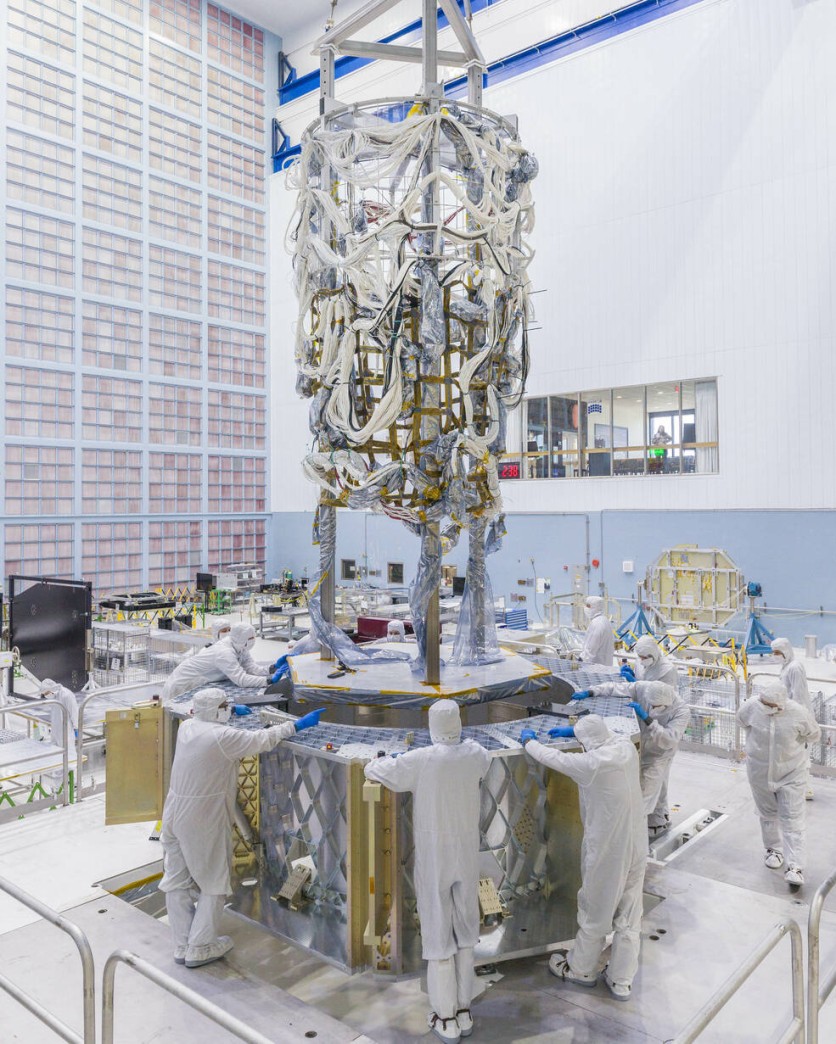The installation and testing phase of NASA's Nancy Grace Roman Space Telescope has commenced with the integration of the spacecraft's intricate electrical cabling, known as the harness.
This vital component facilitates communication between various parts of the observatory and plays a crucial role in providing power and overseeing the observatory's functions through a network of sensors.
This progress signifies a significant advancement toward the telescope's mission of exploring countless cosmic entities and unraveling enigmas like dark energy following its anticipated launch by May 2027.

NASA Nancy Grace Roman Space Telescope's Nervous System
Much like the human nervous system transmitting signals throughout the body, the Roman telescope's harness acts as a vital link connecting its components, delivering both power and commands to electronic boxes and instruments.
Deneen Ferro, the Roman harness project development lead at NASA's Goddard Space Flight Center, likened the harness to the spacecraft's lifeblood, emphasizing its pivotal role in the observatory's operation.
"Just as the nervous system carries signals throughout the human body, Roman's harness connects its components, providing both power and commands to each electronic box and instrument," Ferro said in a statement.
The harness, weighing approximately 1,000 pounds, consists of around 32,000 wires and 900 connectors. These wires, if stretched end-to-end, would span an impressive 45 miles. Positioned upward, NASA said they would reach eight times higher than the peak of Mount Everest. The accomplishment of this milestone reflects a significant endeavor.
In a span of nearly two years, a dedicated team of 11 technicians from NASA's Goddard Space Flight Center measured, cut, and connected wires while ensuring the cleanliness of each component. This painstaking effort was crucial to guarantee the harness's precision and functionality.
Before its integration, the entire harness was constructed on a model of the observatory's structure, offering a testing ground for its assembly. Subsequently, the harness was subjected to the Space Environment Simulator at Goddard, which is an immense thermal vacuum chamber.
Read Also : NASA's Nancy Grace Roman Space Telescope Could Find 400 Earth-Mass Rogue Planets, New Study Reveals
'Bakeout'
The chamber was used for a process known as "bakeout." When space observatories like the Roman telescope are launched, space's vacuum and extreme temperatures can prompt certain materials to eject harmful vapors.
These vapors can then accumulate within electronics, causing issues such as short circuits or deposits on delicate optics, compromising the telescope's performance.
The bakeout process eliminates these gases on Earth, preventing their release within the spacecraft once in space, as explained by NASA. The next phase involves threading the harness through the observatory's flight structure within Goddard's clean room.
The spacecraft's intricate weaving will continue until most of the parts are put together. In parallel, the Goddard crew will start setting up the crucial electronic boxes that will ultimately direct electricity through the harness to all of the observatory's scientific instruments.
Related Article : Ring Nebula Comes Into Focus: NASA's James Webb Space Telescope Unveils Remains of a Dying Star in Stunning Detail

ⓒ 2025 TECHTIMES.com All rights reserved. Do not reproduce without permission.




